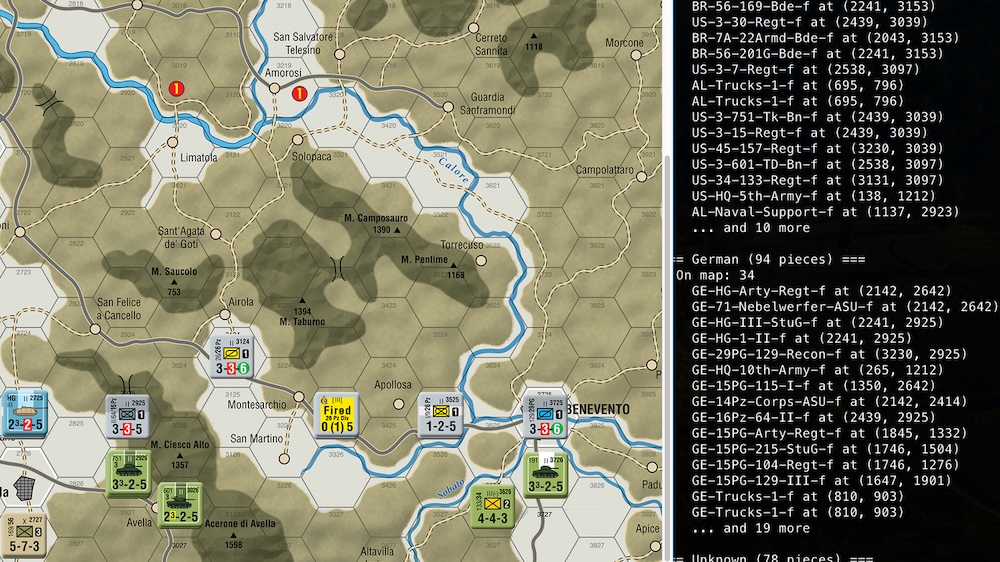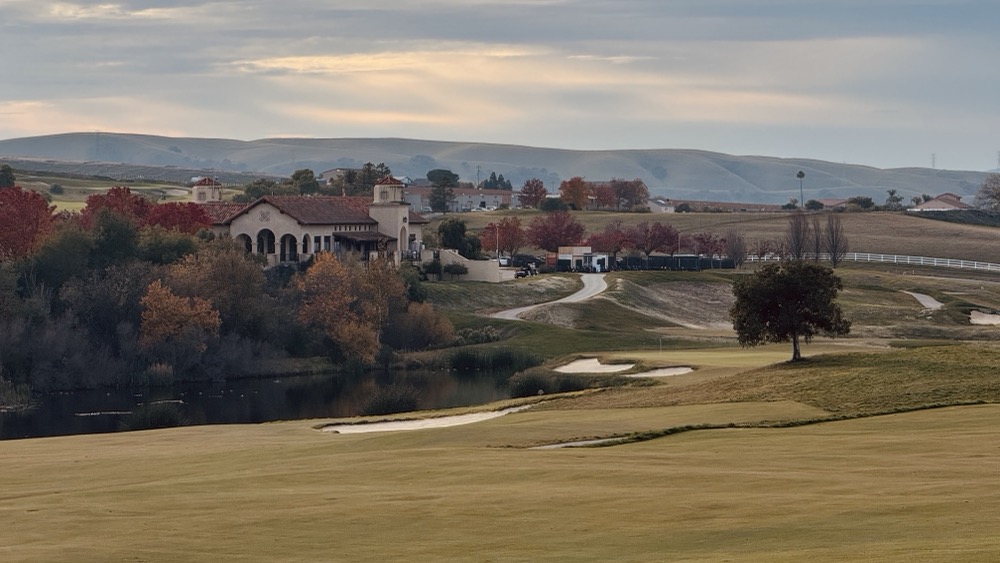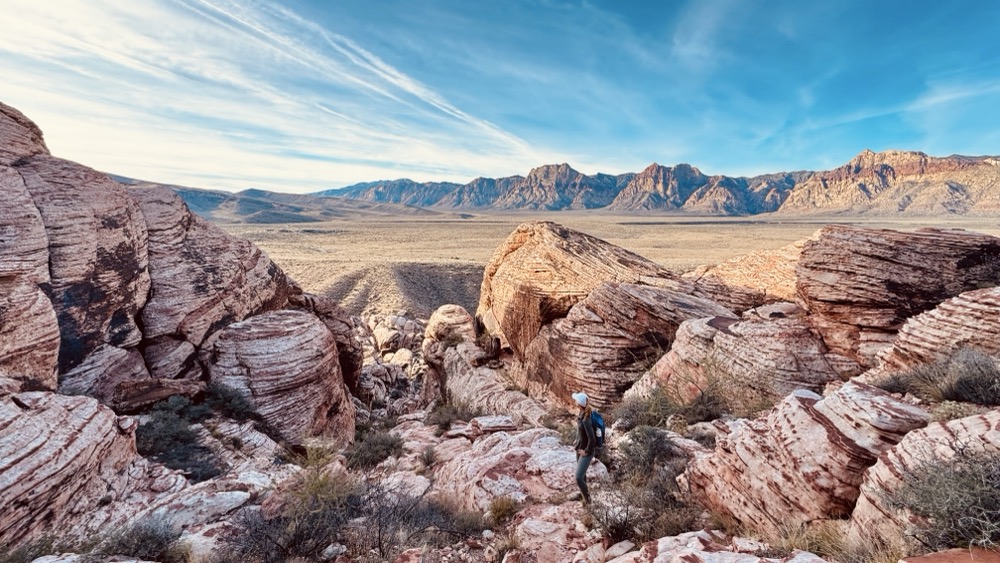Birds of Botswana
What do you do when you are driving around looking for the “big stuff” on game drives and bush walks? You find, identify, and photograph birds!
 Carmine bee eaters with one landing and wings spread
Carmine bee eaters with one landing and wings spread
At the start of the trip it was mainly Ken and I interested in the birds of South Africa and Botswana, but we’ve slowly made converts of the rest of the group. Karen’s photography skills are going way up as a result of practicing the very challenging art of photographing small birds.
One of the big bird highlights of the trip was finding carmine bee-eaters. One was perched very near our vehicle, and (like many bee-eaters) when she would fly away to feed she would come back to the same close perch. So lots of practice and fine-tuning of our manual focus to try to get the perfect shot.
Then her mating partner showed up! We saw a flurry of action, including the mating, and we got a few shots of the male in flight as he would join her on the perch.
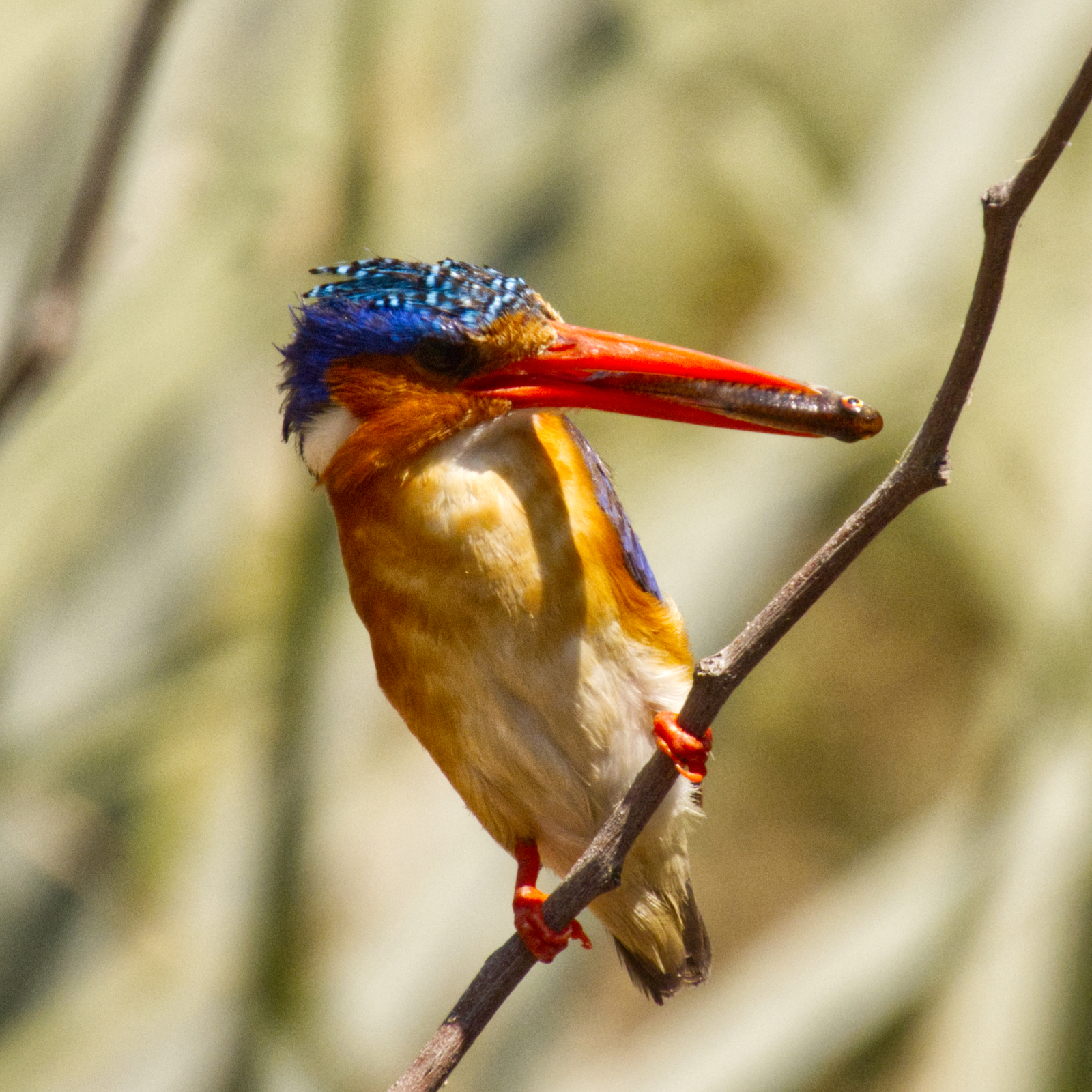 Malachite kingfisher with small fish
Malachite kingfisher with small fish
Another “hope-to-see” bird for Ken and me was the Malachite kingfisher, a very small and spunky kingfisher with brilliant colors. At Camp Okavango we saw… maybe hundreds? They were everywhere, and they loved zooming around in the tiny channels between the main thoroughfairs. Every once in a while one would perch long enough on a branch or reed for a good photo. This one did so right on the boardwalk back to our room. Karen and I both got great photos, but neither of us realized until later that he was holding a small fish in his beak.
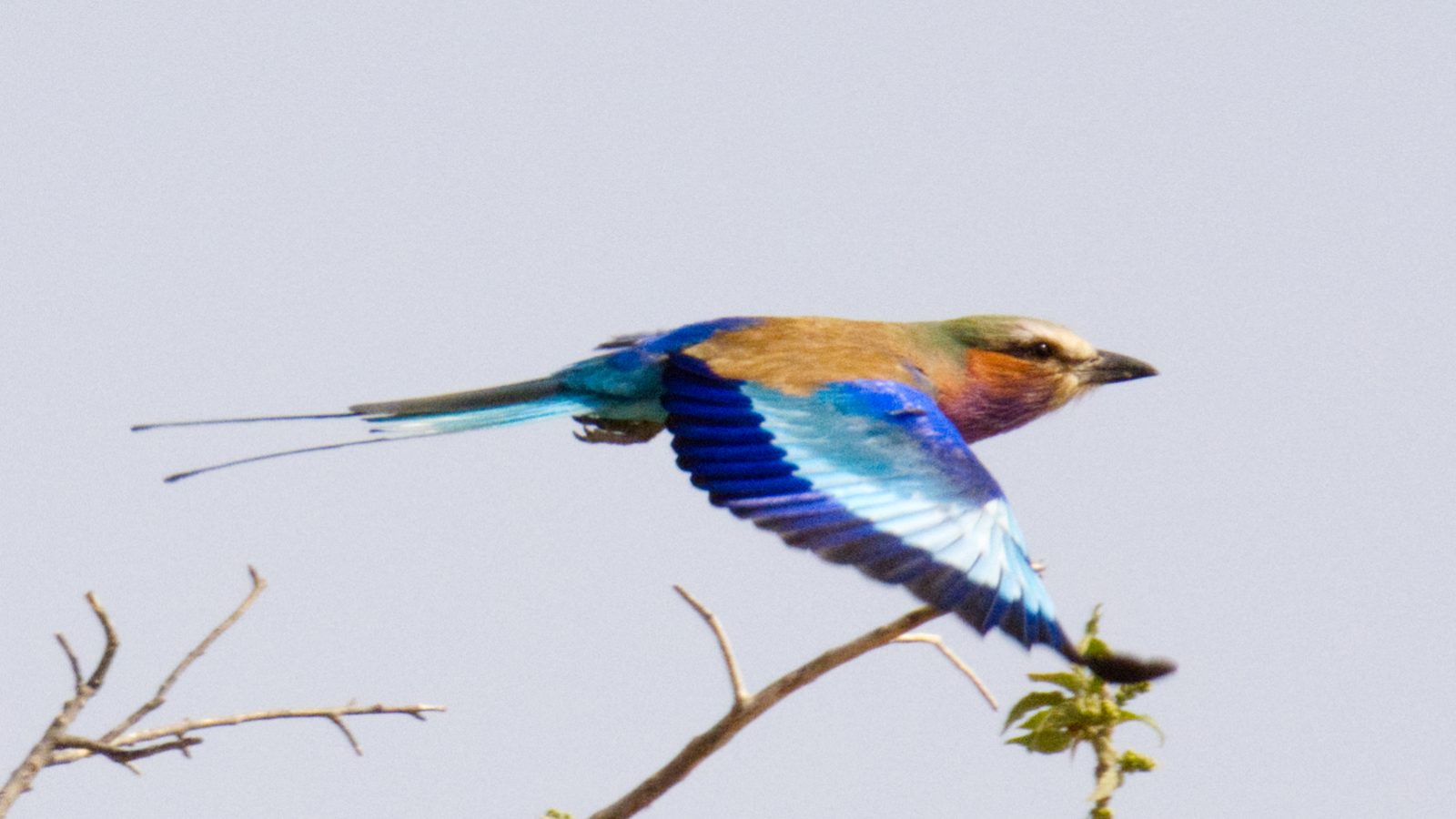 Lilac breasted roller in flight
Lilac breasted roller in flight
I can imagine photography safaris where a day is set aside for photographing the lilac-breasted roller. I think there are at least three shots you need to get: perched, in flight with the back of the wings showing (like my photo above), and in flight about to land showing the inside of the wings. I got two of the three and hope someday to get the landing shot. The photo above is good considering the equipment in use.
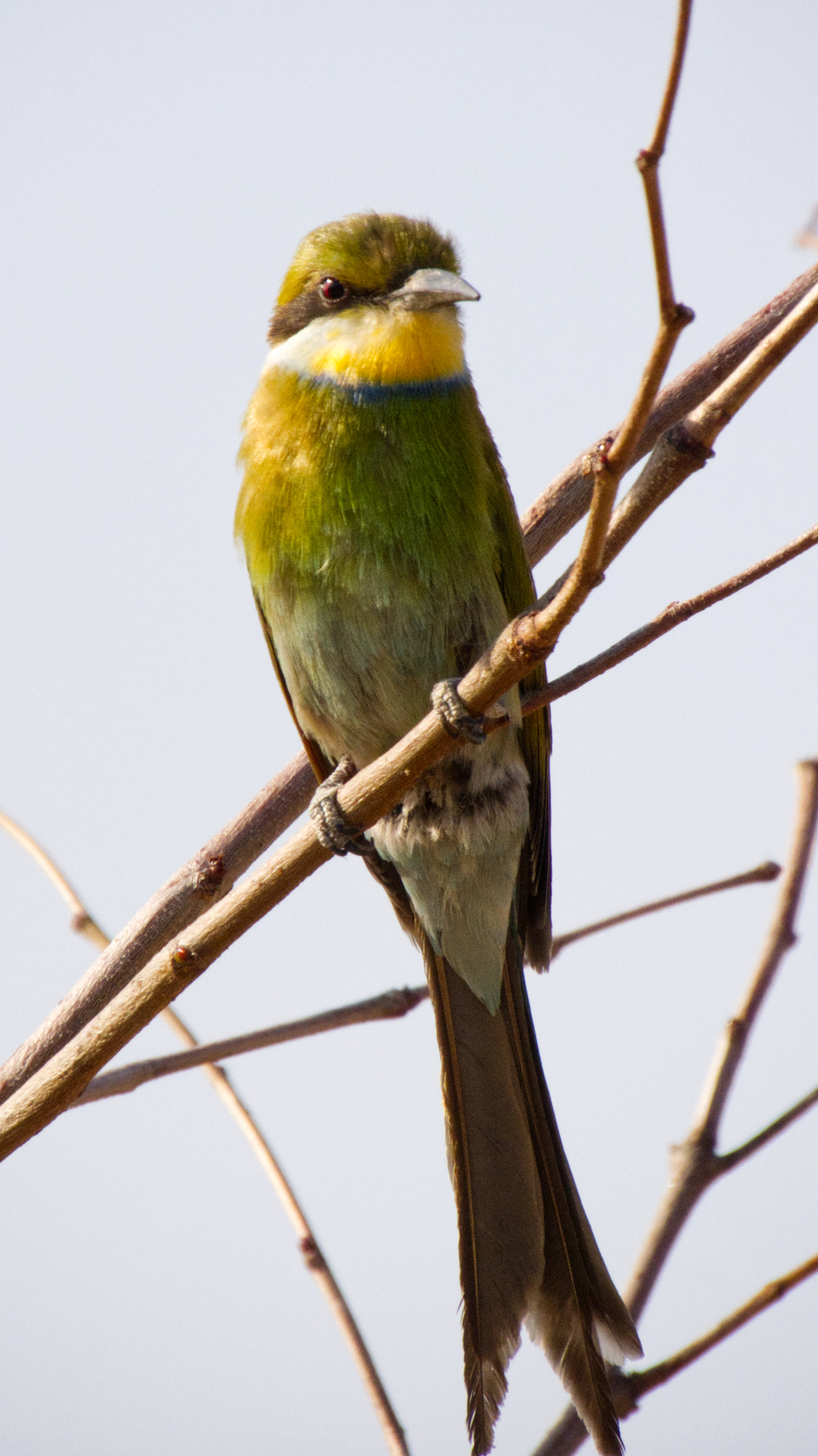 Swallow-tailed bee-eater perched
Swallow-tailed bee-eater perched
Bee-eaters are everywhere in South Africa and Botswana, but there are a few varieties that we are tracking down (beyond the carmine) and hope to see. The most common are the white-fronted and little bee-eaters, and we recently saw some swallow-tailed bee-eaters. They are always gorgeous and their flight patterns make the easy to photograph. They love to fly from their perch, find some food (or just display their colors), then return to the same perch.
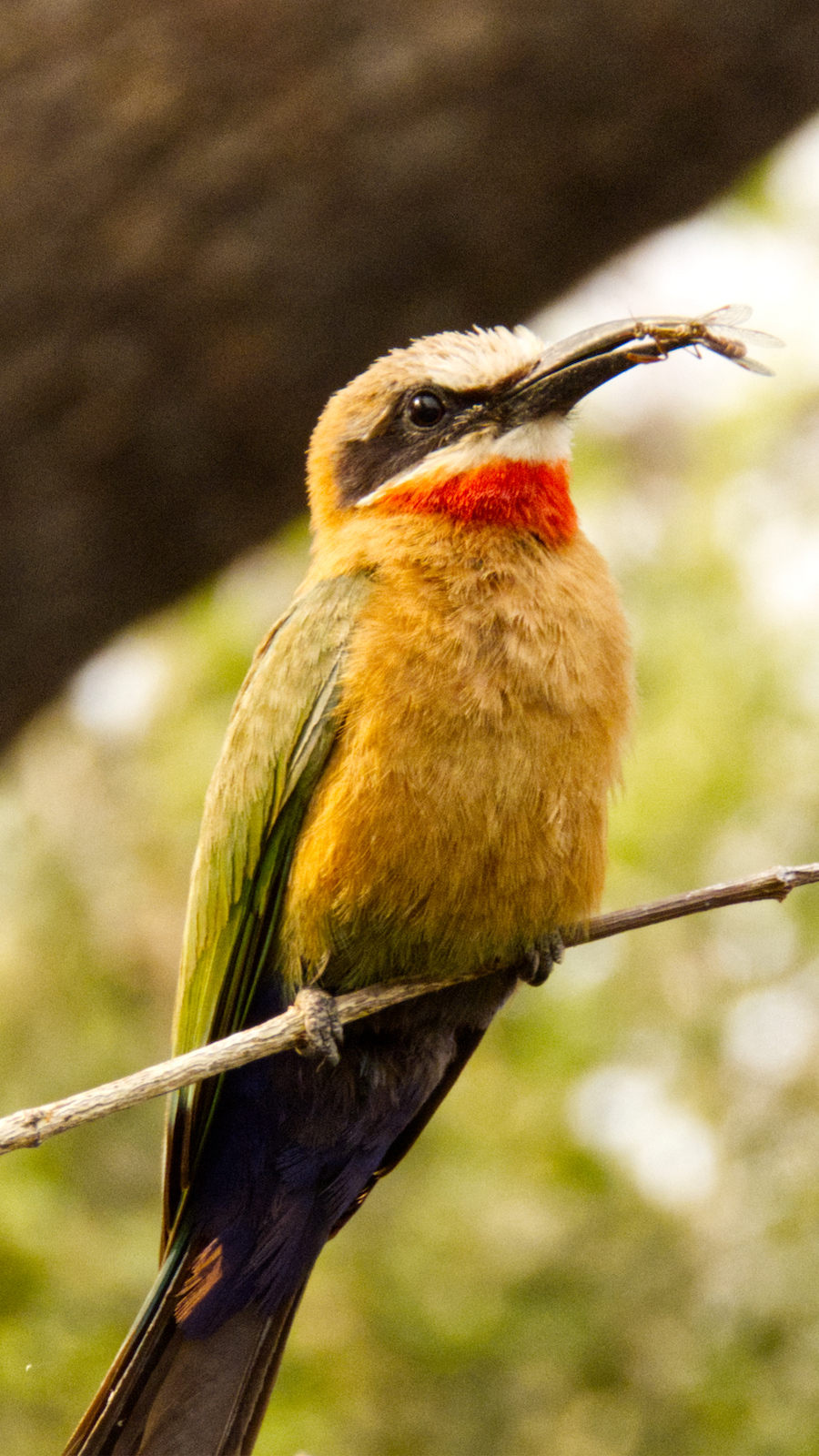 White fronted bee eater with insect
White fronted bee eater with insect
Speaking of finding some food, this was a white-fronted bee-eater that grabbed an insect meal. I don’t know my insects around here, but this looks like one of the small flying praying-mantis like insects we’ve seen around lights at our dinner table.
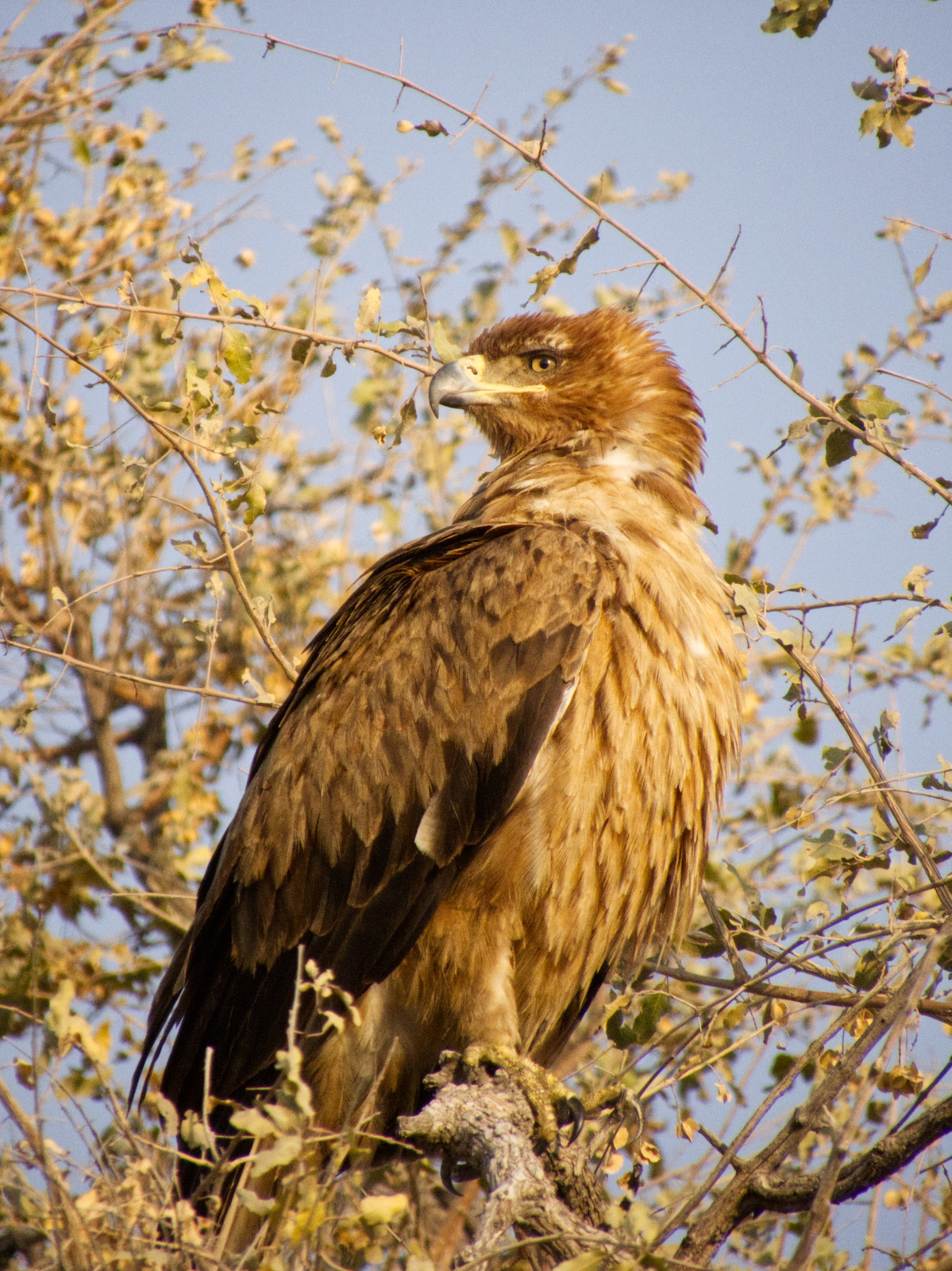 Tawny eagle
Tawny eagle
Raptors are plentiful here, with a wide range of sizes and types. The most plentiful has been the African fish eagle, but a likely second place finisher is the tawny eagle. To me they look like a slightly lighter-colored golden eagle. This is the best photo I have so far, but I almost shared a lower quality one with the eagle in a yoga-like pose with its wings lowered and open, making it look like he was reclining back on his elbows.
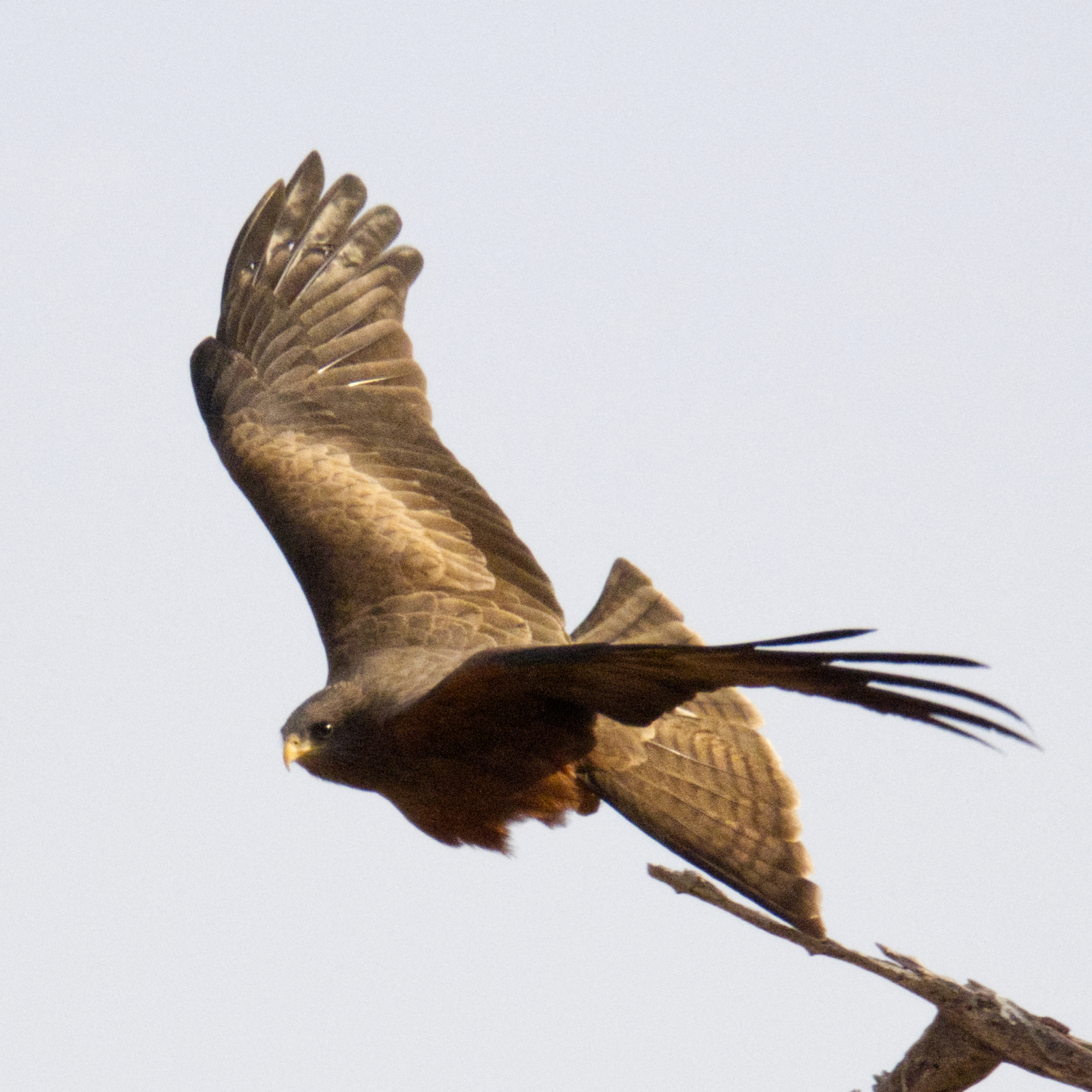 Black kite in flight
Black kite in flight
We started to see a lot of kites in Moreni Game Reserve, especially the yellow-billed (black) kite. Often they were hunting in pairs, and showed up at some of the carrion festivals after the lions departed.
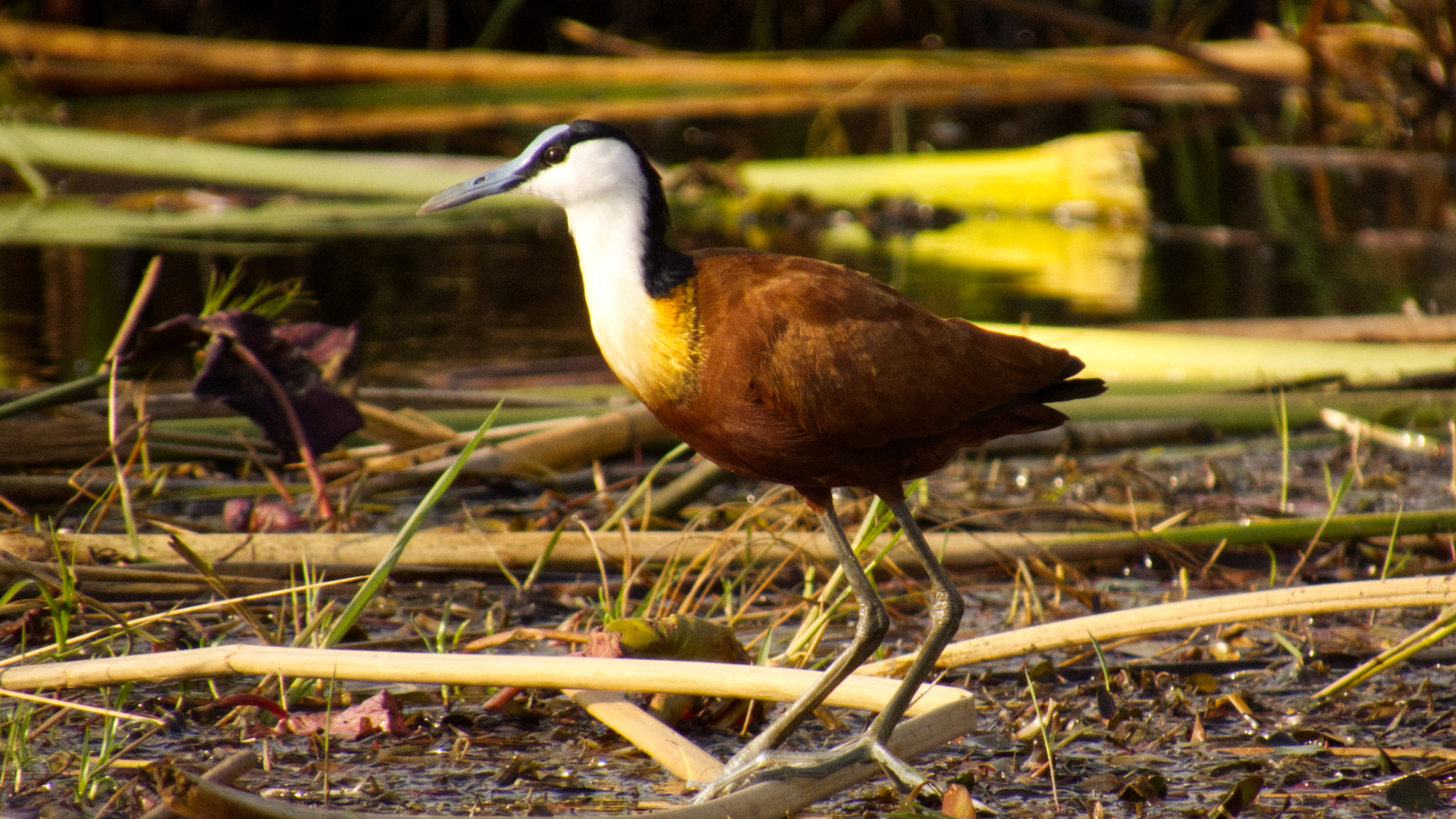 African jacana in wetlands
African jacana in wetlands
During our time in Moreni we were wetland-adjacent most of the time, so saw tons of egrets, herons, spoonbills, ibis, and plover-type birds. There are also the African jacana, a beautiful super-light and dainty shore bird that loves to walk on light vegetation in the water. This gives it the appearance of walking on water, hence the nickname “Jesus bird”.
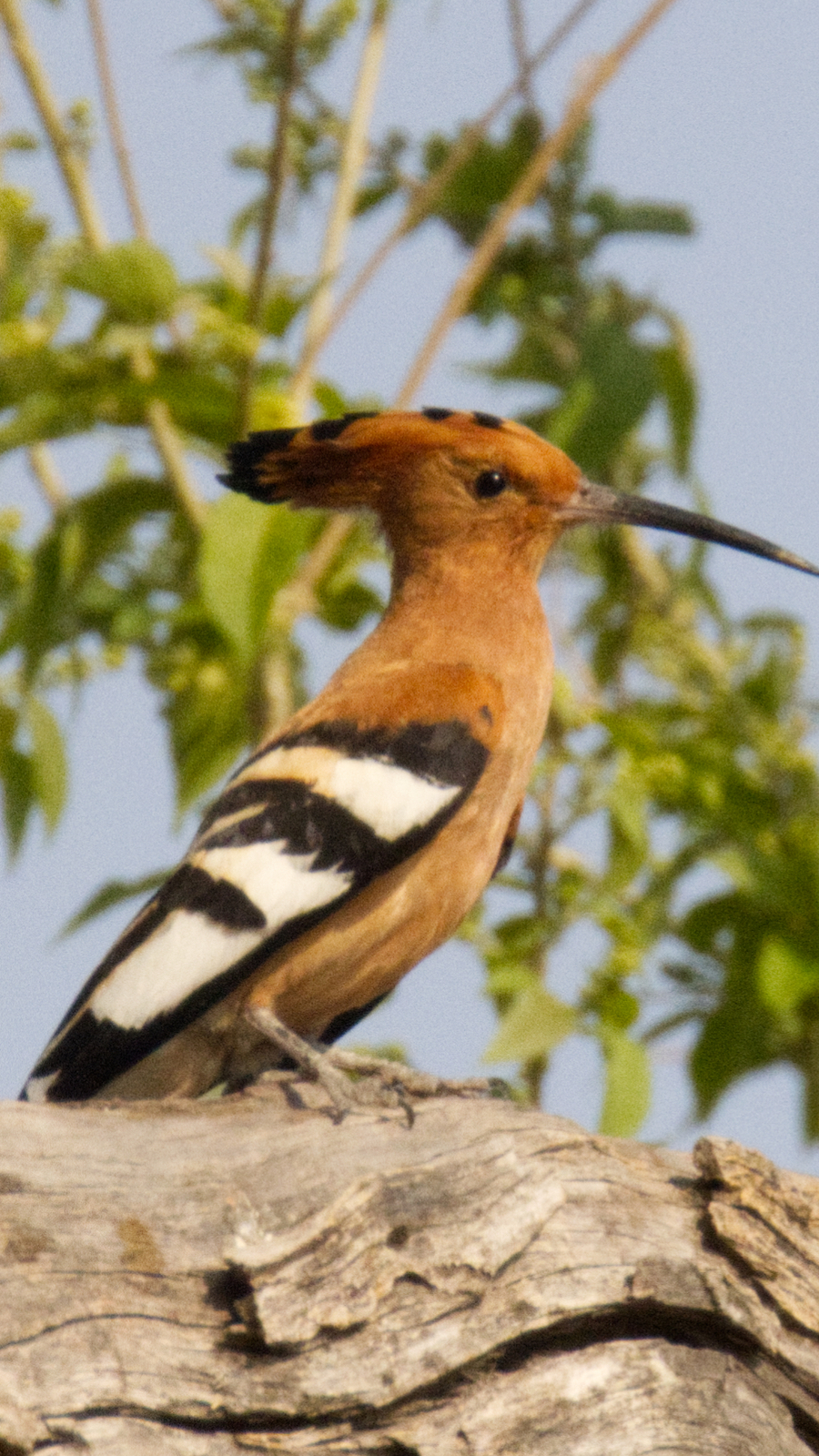 African hoopoe
African hoopoe
Let’s close out with three canonical, common, yet beautiful south African birds. First up is the African hoopoe. Whenever I saw one in flight I would first think it was a woodpecker, having the long beak and crowned head. They are not; rather they use the long beak to find insects and other small prey in the ground.
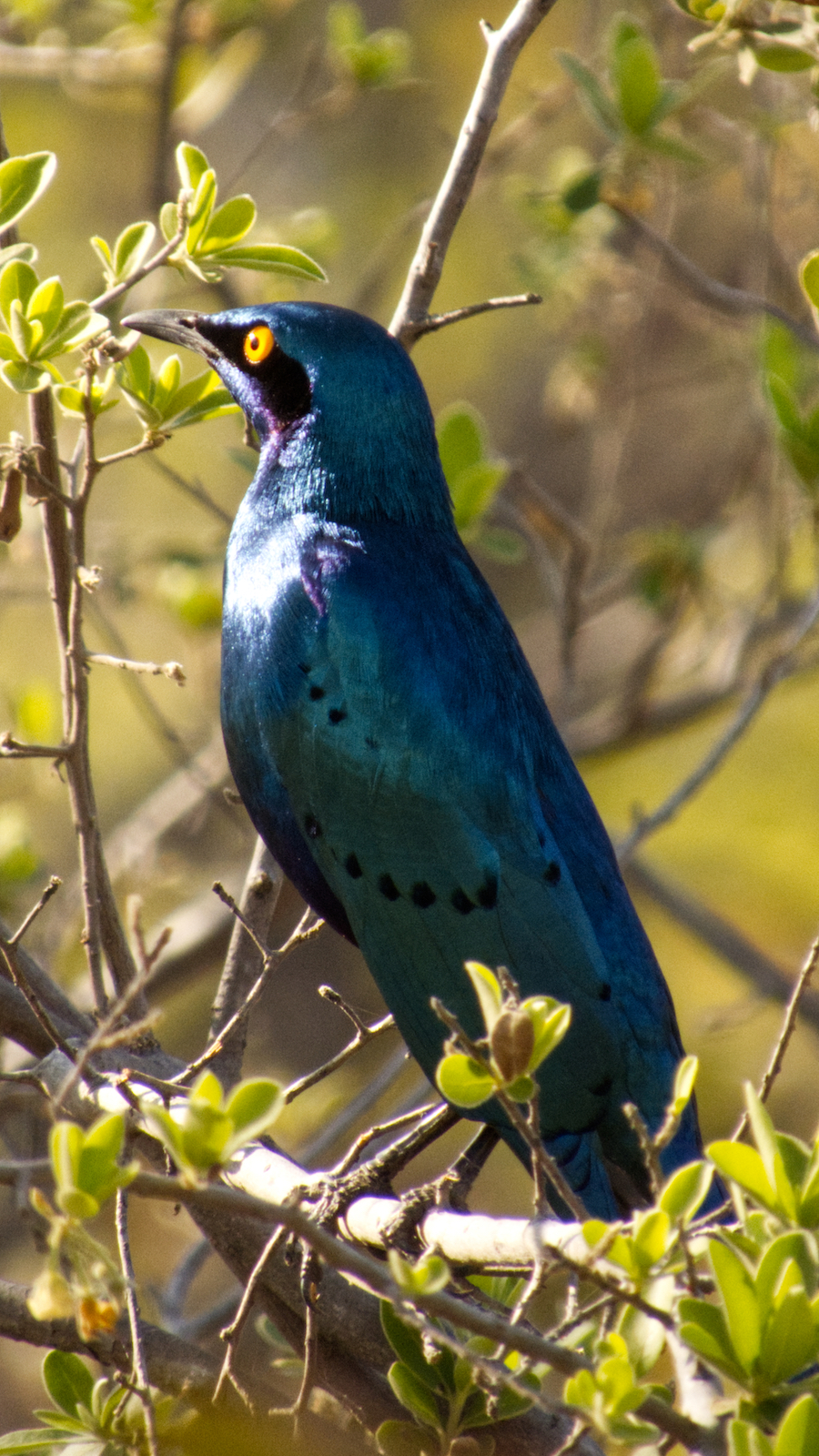 Cape starling
Cape starling
Next up is the Cape (glossy) starling, as common as grackles are in the USA but so much more beautiful. There are a wide variety of starlings around and identification isn’t trivial. We’ve also encountered the blue-eared starling, Burchell’s starling, and Meve’s starling.
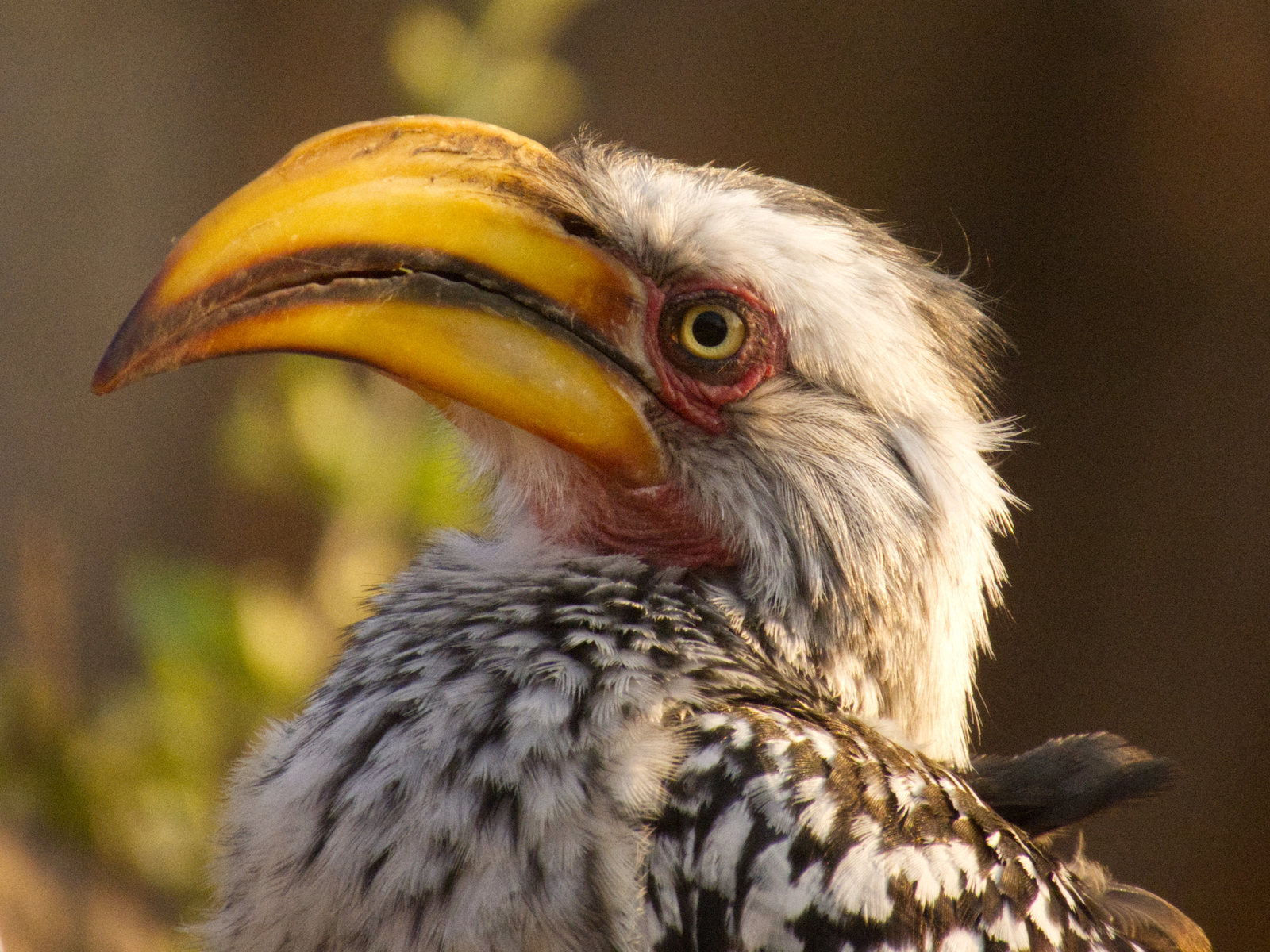 Southern yellow billed hornbill
Southern yellow billed hornbill
Finally we have the southern yellow-billed hornbill (flying banana), close cousin of the southern red-billed hornbill (Zazu, aka the flying chili pepper). Move into dry country and you are guaranteed to start seing hornbills flying around, even near civilization. They are everywhere and we never tire of them.





